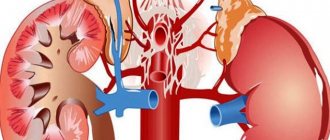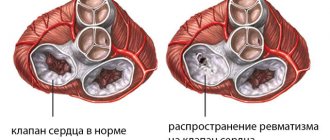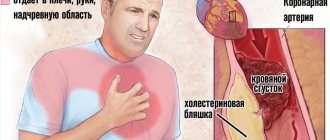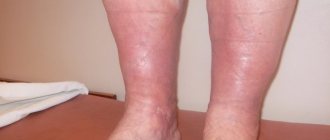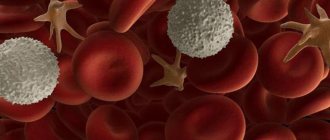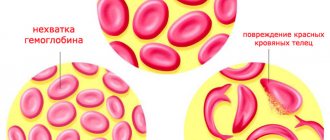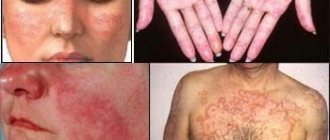Nature of the disease
Horton's disease is also known by names such as giant cell temporal arteritis or vasculitis. This disease belongs to the category of autoimmune and is inflammatory in nature. Like other systemic vasculitides, it typically affects veins, arteries, and other large blood vessels. Very often this disease is localized within the lining of the carotid artery.
This syndrome is named after Dr. Horton. The disease was discovered in America in the thirties of the twentieth century. Statistics show that temporal arteritis is most common in northern Europe and the Scandinavian countries. As a rule, the disease affects people of retirement age, and women are affected almost twice as much as men.
Causes of the disease
Researchers have not been able to reliably establish the causes of the development of this disease.
It is believed that the cause may be a genetic predisposition. In addition, by the fact that people get sick more often after 50 years of age, one can judge the role of hormonal and age-related changes in the occurrence of Horton's disease. Temporal arteritis is characterized by systemic damage to the arterial bed with a peculiar localization of affected areas and the presence of giant cells in the infiltrate. During the development of the disease, any arterial bed can be affected, but in almost all cases changes are found in the aorta and large vessels extending from it. The smaller the caliber of the artery, the weaker the signs of inflammation.
Prerequisites
Horton's disease is believed to occur as a result of a person's immune system falling. Numerous blood tests show that antibodies accumulate at the site of artery damage by vasculitis. Moreover, the development of this disease may depend on the presence of wandering viruses in the body, such as herpes, hepatitis, and causative agents of colds. In addition to all of the above, scientists also have a theory about a possible genetic predisposition, as this is indicated by the presence of the same genes in patients.
Horton's disease, the symptoms of which are very varied, can manifest its symptoms from several weeks to several months. Sometimes the development of the disease accelerates after a viral, infectious or cold illness. Symptoms of the disease can be divided into general, manifestations of vascular damage and a decrease in the level of vision. As a rule, the presence of at least one of them determines which doctor to contact.
Causes
Horton's syndrome is a rheumatic disease that has a very negative effect on the human immune system. Why this happens has not been studied. Most likely, the occurrence of the disease is associated with infectious processes in the body that were caused by viruses or bacteria, for example, rubella, chickenpox, pneumonia, hepatitis or influenza. In approximately 1/3 of those with this disease, a hepatitis marker and antibodies to it are detected in a blood test; in addition, this antigen is located precisely in the walls of the affected arteries. Also, another cause of temporal arteritis may be a genetic predisposition to this disease. People with HLA-DR4 proteins, which are localized in white blood cells, are most susceptible to this pathology.
Polymyalgia has been noted to be a comorbidity of temporal arteritis. It is also a pathology of a rheumatic nature.
General symptoms
The manifestation of Horton's disease is increased body temperature, frequent and severe headaches, rapid weight loss, fatigue, sleep disorders, joint and muscle pain. As for pain in the head, it can occur in one part of the skull or in several at once and, as a rule, has a pulsating character. Most often, pain occurs at night and only becomes more intense over time. In addition to migraines, patients may experience numbness of the scalp, pain when talking or eating, and discomfort in the facial area. Pain in muscles and joints is usually localized in the shoulders or hips. The nature of joint pain is similar in nature to arthritis.
Symptoms and clinical picture
Giant cell arteritis develops gradually, so symptoms appear as it progresses, but in general, the onset of the disease and its development can be diagnosed by three signs, namely:
- deterioration of the patient’s general condition;
- vascular changes;
- deterioration of vision.
Deterioration of the general condition manifests itself in the form of:
- increased temperature (occasionally or constantly);
- poor palpation or complete absence of pulse in the peripheral arteries;
- headaches when combing hair;
- tightening, tingling or numbness of the facial muscles when talking;
- increased fatigue;
- loss of appetite;
- losing weight;
- depression;
- toothache in the upper or lower jaw;
- insomnia;
- numbness of fingers;
- feeling of chilliness in the limbs;
- pain in joints and muscles.
Vascular symptoms include:
- redness in the area of the arteries;
- thickening of blood vessels;
- pain of an acute and dull nature;
- the appearance of nodules in the scalp;
- increased pain when wearing glasses, when compressed by pillows.
Damage to large vessels and arteries by blood clots leads to ischemia.
Specific symptoms include:
- The emergence of a new type of headache with significant vascular changes. It is acutely felt in the temporal part of the head or on the back of the head. At first, the patient feels it only on one side of the temple, and then on the other. The pain gradually increases. It is very difficult to relieve with simple analgesics. When putting on hats or touching a pillow, it intensifies.
- Sensation of pain when touching the veins. The skin in the area of the affected artery becomes pink. Trophic changes and necrosis of individual areas occur.
- Ischemic claudication of the lower jaw, manifested by muscle soreness when chewing. Patients complain of difficulty moving the lower jaw during conversation and eating. This results in the greatest visual disturbances, but necrosis of the tongue can also occur.
- Swelling of veins in the temple area. This can be easily identified by simply examining the forehead area. This symptom is characteristic of Horton's disease if it is advanced.
Against the background of vascular ischemia, a stroke or heart attack can occur, although this occurs in rare cases, since only with multiple lesions will the vessels narrow on both sides.
When the organs of vision are damaged, the patient begins to feel:
- vagueness of the items in question;
- fog before the eyes and flickering spots;
- double vision;
- pain, especially when the eye muscles are tense.
When examining a patient, the doctor begins to notice:
- pupil defects;
- swelling of the optic nerve;
- deterioration of blood supply to the muscles of the eye;
- downward displacement of the upper eyelid.
In general, there are five clinical variants of the course of Horten’s disease:
- with cranial symptoms;
- with rheumatic polymyalgia (an inflammatory disease leading to pain and stiffness of the muscles, especially the shoulder girdle);
- with two preceding symptoms simultaneously;
- with fever;
- with signs of a systemic process.
The latter symptom was recently discovered and was found to be fatal. In this case, the person does not experience pain, even the erythrocyte sedimentation rate (ESR) remains normal. Thus, signs of a systemic process can be identified only by deterioration in the health of the visual organs.
Vascular damage
Vessels with Horton's disease undergo compaction. They usually look like nodules that are painful and hot to the touch. At the same time, in such vessels there are no signs of the presence of a pulse or blood movement. There may also be lumps and swelling on the scalp. Moreover, very often the areas of skin close to the arteries change their color to reddish-burgundy. Edema may occur with Horton's syndrome.
The disease occurring in the area of the internal carotid artery is particularly dangerous. This is because identifying external symptoms can be difficult. Complications of this course of the disease are also associated with the fact that severe damage to a large vessel, if not detected in time, can lead to serious negative consequences, such as stroke and hemorrhage.
Diagnostics
This disease is detected mainly through external clinical examination, as well as examination of test results. When assessing the patient's condition, special attention is paid to neurological health. It is worth considering that this disease can greatly affect the level of vision, so its testing plays an important role. As laboratory tests, a biopsy is taken from the damaged vessel, and the patient is also prescribed Doppler ultrasound, magnetic resonance or computed tomography of the brain.
Research results
Based on the data obtained during diagnosis, one can judge the stage of the disease and make decisions about treatment. Typically, the results are comprehensive information obtained after undergoing an examination and laboratory tests.
As a result of blood sampling, the presence of insufficiency of blood cells, an increase in the level of leukocytes and an acceleration of erythrocyte sedimentation are determined. A complete analysis of a vein usually reveals a change in the ratio of blood protein fractions and a decrease in albumin levels.
When examining vision, doctors pay special attention to establishing its acuity and the presence of defects and destruction of the inner fundus of the eye.
Biopsy and studies of the cellular material of the damaged vessel make it possible to establish benign changes in the thickness and structure of the vessel in Horton's syndrome. The disease usually occurs in the form of granular nodules appearing in the walls of the arteries. Such development cannot but affect the functionality of the vessel itself: over time, its lumen becomes narrower and narrower.
However, there are cases when such changes in the artery or vein are not observed. This may be explained by the fact that the damage to the vessel is very localized and cannot always be identified. This is due to the fact that the damage to the artery is segmental in nature and during a biopsy it is possible to take an unaffected section of the artery.
In addition, all the described symptoms depend only on the characteristics of the body of each individual patient, including his age, lifestyle and other factors. Thus, the Association of American Rheumatologists provides statistics indicating that the course of the disease is greatly influenced by a wide variety of demographic factors. These include the patient's age, especially if he is over 50 years old.
Diagnosis problems
When establishing the symptoms of Horton's disease, it should also be distinguished from similar diseases, such as arthritis, rheumatism, neuralgia, pathologies of the lymphatic system, and systemic vasculitis. This is especially true for older people. The course may differ from that in other age groups, since very often changes in the veins and arteries associated with other diagnoses fit the description of Horton's syndrome. The disease is confused, for example, with atherosclerosis. However, pain in the head in this case is of a completely different nature. In addition, vasculitis is distinguished by a much more intense level of erythrocyte sedimentation and more pronounced changes in the walls of blood vessels, which appear on biopsy. Sometimes such mixed symptoms can cause a problem for the patient in deciding which doctor to see.
Treatment
Getting rid of this disease is carried out through the use of glucocorticoids. Typically, at the beginning of treatment, the doctor prescribes therapy with these drugs, which continues for two years. The course is stopped if the patient is completely free of the disease and there are no relapses. The use of corticosteroids has a positive effect on Horton's disease.
Treatment with hormonal drugs is carried out according to an appropriate scheme, taking into account the nuances of the course of the disease. With slow development, the patient is prescribed tablets containing prednisolone in the amount of 20 to 80 milligrams per day. With intensive development of the disease, it is more advisable to use shock therapy with large doses of methylprednisolone. After a month of heavy treatment, the dosage may be reduced. In this case, every week the dose of the drug is reduced to the maintenance level, which is about 5-7.5 milligrams per day. After two years of treatment, the question of discontinuing therapy may arise due to the absence of relapses. For the last six months, the patient can be on a maintenance dose of 2-2.5 milligrams of the hormonal drug per day.
However, it is possible that treatment with glucocorticoids does not give the expected effect. In this case, it is advisable to prescribe treatment with cytostatics. Moreover, in addition to hormonal therapy, anticoagulant drugs and antihistamines may be prescribed.
Definition
Horton's headaches (cluster headaches) are one of the main headaches.
This means that such symptoms occur spontaneously; we cannot find a cause in the form of another disease. It is likely that irritation of the trigeminal nerve during aseptic sigmoid sinusitis is the cause of pain. Another hypothesis is about pathological processes occurring in the posterior part of the pituitary gland. This gives symptoms from the group of trigeminal-vegetative headaches, because in addition to the pain itself, we observe rupture and redness of the conjunctiva, sweating of the face, runny nose and nasal congestion, drooping eyelids and miosis on the side of the pain.
The disease pattern is also affected by the release of histamine (another name for Horton's disease is histamine headaches). Therefore, eating foods such as red wine may trigger an attack. Also, foods containing tyramine (cheese, red meat, chocolate) can cause histamine headaches.
Interesting fact
Horton's syndrome is an extremely intense (almost unbearable) headache.
Horton's headache is a rare condition.
It affects 0.05-0.3% of the general population. Men are seven times more likely than women. The genetic background is also significant. Patients' families are at risk eight times higher than the general population. Most often, the disease manifests itself between the ages of 20 and 40 years. This doesn't mean it can't happen in older or younger people. A case of cluster headaches in a one-year-old child is described.
Disease prognosis
It should be noted that such a disease, as a rule, does not pose a threat to the patient’s life. Some rare advanced cases of the disease can lead to deterioration of vision, even blindness, as well as to the development of stroke, heart attack and necrosis. However, the disease is treatable in the vast majority of cases. The prognosis for properly selected therapy is predominantly favorable. If there are no relapses in the next two years of the patient’s life, they say that, most likely, they will not occur in his future life. Rare complications during treatment may be associated solely with the patient's personal intolerance to corticoid therapy. Do not forget the main rule of successful treatment - only a doctor should make a diagnosis! He also has the exclusive right to prescribe treatment.
Since one of the factors in the occurrence of the disease is its viral nature, it is very important to adhere to a healthy lifestyle and harden the body. You should also remember that the likelihood of developing vasculitis is genetic, and do not expose yourself to unnecessary risk.
Patients are also often interested in the question: do they give disability for Horton’s disease? As a rule, severe inconvenience during the disease can lead to its issuance, since the complex course of the disease, which manifests itself in severe headaches and tearfulness, does not allow the employee to perform his duties for a long time, including in bright light.
Horton's disease
Symptoms of Horton's disease may appear gradually over several weeks. In other cases, as a rule, after suffering from acute respiratory viral infection or another viral infection, an acute onset is observed. The components of a typical clinical picture of Horton's disease are: general symptoms, vascular manifestations and damage to the organ of vision.
General symptoms
Horton's disease includes febrile fever, intense headache, anorexia, weight loss, fatigue, sleep disturbance, arthralgia and myalgia. Headache with Horton's disease can be unilateral or bilateral, has a pulsating dull character and is often temporally localized, worsens at night and increases over 2-3 weeks. It may be accompanied by soreness of the scalp, acute pain and numbness in the face, and pain when chewing. Myalgia, as a rule, affects the muscles of the shoulder and pelvic girdle. Their symptoms are similar to polymyalgia rheumatica.
Vascular manifestations
Horton's disease is expressed in compaction and pain when palpating the parietal and temporal arteries, and there is often a lack of pulsation. When palpating the scalp, nodules are revealed. Often, when examining a patient with Horton's disease, swelling and redness of the skin in the temporal region is detected. Lesions of individual branches of the internal carotid artery are manifested by attacks of transient ischemic attacks or ischemic stroke of the corresponding part of the brain. In rare cases of Horton's disease, lesions of other large arteries are observed, characterized by corresponding symptoms. They can lead to the development of intermittent claudication and infarction of somatic organs, including myocardial infarction.
Lesions of the organ of vision
with Horton's disease they are manifested by double vision (diplopia), pain in the eyeball, and intermittent blurred vision. Patients complain that they sometimes see a “blurry” or “foggy” picture of their surroundings. These symptoms are associated with the typical course of Horton's disease, a disruption of the blood supply to the optic nerve and the development of its ischemic neuropathy, which can ultimately lead to decreased vision and blindness. Irreversible changes in the optic nerve usually form several months after the onset of Horton's disease, so timely treatment can avoid them.
